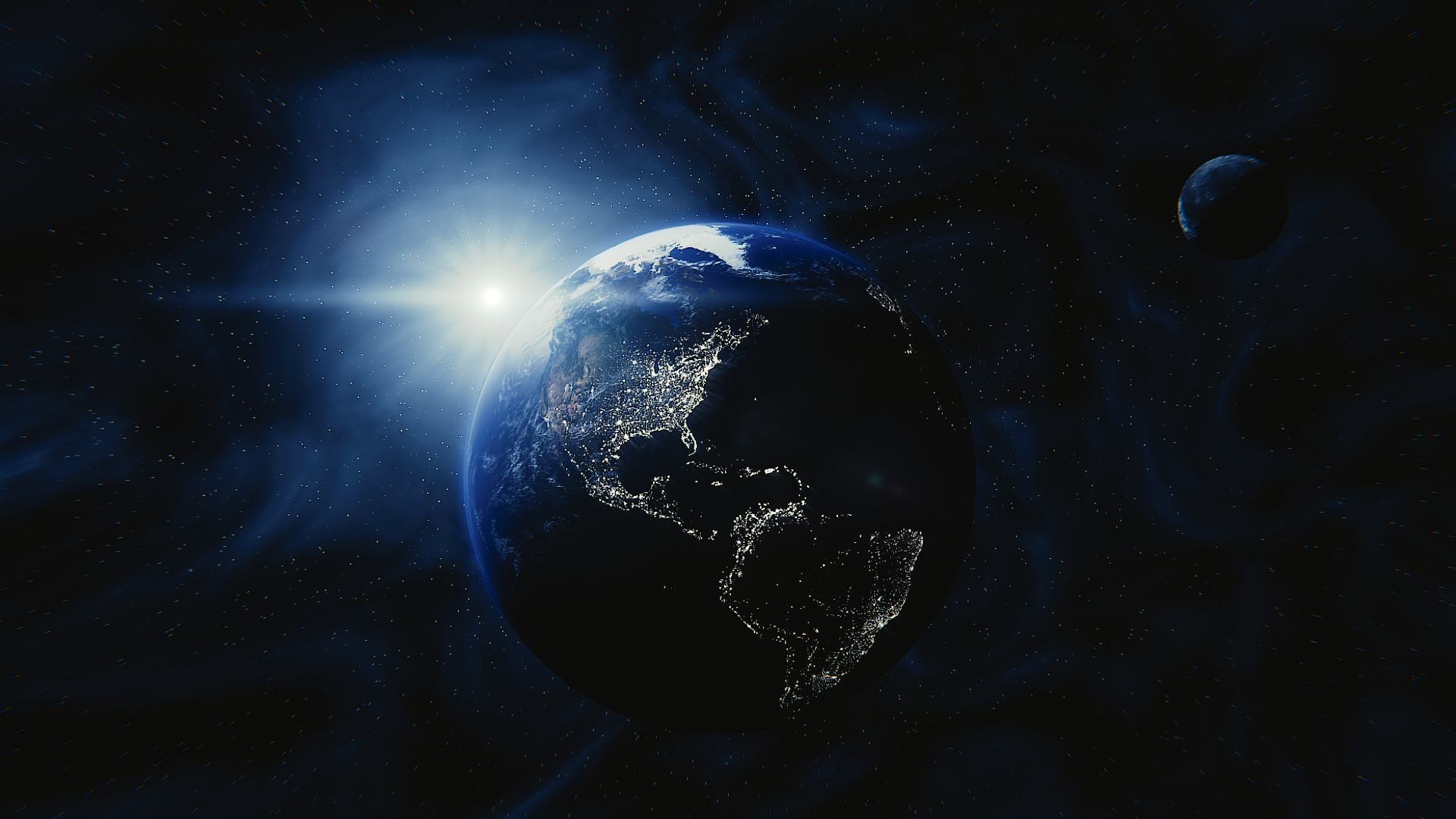
Articles on the Anthropocene
In-depth articles on the Anthropocene
What is the Anthropocene? - Part 3
What the term "Anthropocene" really covers
The first two parts of this article dealt respectively with the definition of the Anthropocene in the scientific community (part 1) and its acceptance by the "general public" (part 2). In this third part, we are finally going to see what the Anthropocene really is.
Anthropocene ultimately remains a rather neutral and even flattering concept: humans would have become "masters of the Earth", which is a priori a feat. The problem is that there is a "detail" that the Anthropocene does not say, that we have only touched on in the previous parts and that changes everything: humans have certainly become a huge force for change at Earth's surface, but this power is exerted in the direction of a profound alteration of life and its foundations.
The Forgotten Victims of the Anthropocene
We have already spoken of the Pleistocene extinction event, which took place on all continents between 70,000 and 10,000 years before the common era and during which a large number of terrestrial megafauna species became extinct, in connection with the colonization of land by Homo sapiens.
The Pleistocene extinction may have been a spectacular episode, but in the end it was only a mini-repetition of the great drama that is being played out today. Because it is no longer just large animals that are disappearing in "abnormal" proportions, but all "non-human" living beings!
Nowadays, the rate of species extinction is several hundred or even several thousand times higher than the "normal" rate [1-5]. This exceptional rate suggests that we are at the beginning of the sixth mass extinction of life on Earth. In total, about one million species are likely to disappear in the next decades, a situation that has never happened before in the history of humanity [1].
A quarter of animal and plant species are at high risk of extinction. For example, more than 40% of amphibian species, nearly 33% of coral reefs and more than a third of all marine mammals are threatened [1].
If the indicators are alarming about the rate of species extinction, they are critical regarding the decline of animal populations. Since 1900, the numbers of individuals have decreased by at least 20% on average for known species [1], with large disparities depending on the species.
Large animals remain particularly exposed: in less than half a century, studied populations of mammals, birds, amphibians, reptiles and fish have seen an average relative decline of about 70% [6]! The highest rates of decline are observed in Central and South America, Indonesia and Southeast Asia, but all regions of the world are concerned.
The figures are terrible for apes, with 60% of species in danger of extinction, and four out of six species of great apes are one step away from extinction [7]. In the Democratic Republic of the Congo, the number of eastern lowland gorillas has decreased by 87% in twenty years [6].
References
[1] IPBES, « Global assessment report on biodiversity and ecosystem services of the Intergovernmental Science-Policy Platform on Biodiversity and Ecosystem Services. Bonn, Germany », IPBES secretariat, Bonn, Germany, 2019. https://zenodo.org/record/3553579
[2] G. Ceballos, P. R. Ehrlich, et P. H. Raven, « Vertebrates on the brink as indicators of biological annihilation and the sixth mass extinction », Proc. Natl. Acad. Sci., vol. 117, no 24, p. 13596-13602, 2020. https://www.pnas.org/doi/10.1073/pnas.1922686117
[3] G. Ceballos, P. R. Ehrlich, A. D. Barnosky, A. García, R. M. Pringle, et T. M. Palmer, « Accelerated modern human–induced species losses: Entering the sixth mass extinction », Sci. Adv., vol. 1, no 5, p. e1400253, 2015. https://www.science.org/doi/10.1126/sciadv.1400253
[4] S. L. Pimm et al., « The biodiversity of species and their rates of extinction, distribution, and protection », Science, vol. 344, no 6187, 2014. https://www.science.org/doi/10.1126/science.1246752
[5] J. M. De Vos, L. N. Joppa, J. L. Gittleman, P. R. Stephens, et S. L. Pimm, « Estimating the normal background rate of species extinction », Conserv. Biol., vol. 29, no 2, p. 452‑462, 2015. https://conbio.onlinelibrary.wiley.com/doi/pdf/10.1111/cobi.12380
[6] WWF, « Living Planet Report − 2020: Bending the curve of biodiversity loss. Gland, Suisse », WWF, Gland, Suisse, 2020. https://www.wwf.fr/sites/default/files/doc-2020-11/20200910_Rapport_Planete_Vivante_WWF.pdf
[7] A. Estrada et al., « Impending extinction crisis of the world’s primates: Why primates matter », Sci. Adv., vol. 3, no 1, p. e1600946, 2017. https://www.science.org/doi/10.1126/sciadv.1600946
[8] C. A. Hallmann et al., « More than 75 percent decline over 27 years in total flying insect biomass in protected areas. », PLOS One, vol. 12, no 10, p. e0185809, 2017. https://doi.org/10.1371/journal.pone.0185809
[9] S. Seibold et al., « Arthropod decline in grasslands and forests is associated with landscape-level drivers », Nature, vol. 574, no 7780, 2019. https://www.nature.com/articles/s41586-019-1684-3
[10] T. W. Crowther et al., « Mapping tree density at a global scale », Nature, vol. 525, no 7568, p. 201‑205, 2015. https://www.nature.com/articles/nature14967
[11] L214, « Dossier : les chiffres clés de la souffrance animale – Animaux abattus dans le monde », L214. https://www.l214.com/animaux/chiffres-cles/statistiques-nombre-animaux-abattus-monde-viande/
[12] C. Smith, J. C. A. Baker, et D. V. Spracklen, « Tropical deforestation causes large reductions in observed precipitation », Nature, vol. 615, no 7951, 2023. https://www.nature.com/articles/s41586-022-05690-1
[13] IPCC, « Climate Change 2022: Impacts, Adaptation, and Vulnerability. » Contribution of Working Group II to the Sixth Assessment Report of the Intergovernmental Panel on Climate Change [H.-O. Pörtner, D.C. Roberts, M. Tignor, E.S. Poloczanska, K. Mintenbeck, A. Alegría, M. Craig, S. Langsdorf, S. Löschke, V. Möller, A. Okem, B. Rama (eds.)]. Cambridge University Press. Cambridge University Press, Cambridge, UK and New York, NY, USA 2022. https://www.ipcc.ch/report/ar6/wg2/downloads/report/IPCC_AR6_WGII/FrontMatter.pdf
[14] Wikipedia, « Anthropocene », Wikipedia. https://en.wikipedia.org/wiki/Anthropocene

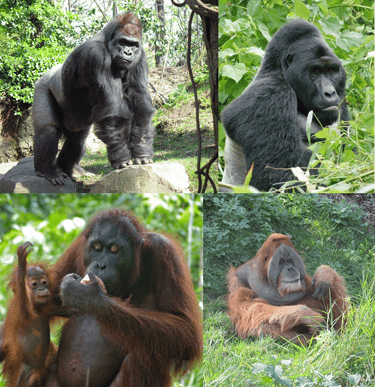
Figure 1: The four species of great apes close to extinction. Left to right, starting from top: Western gorilla, Eastern lowland gorilla, Bornean orangutan, and Sumatran orangutan. As a reminder, Homo sapiens is one of the six species of great apes that still exist. Will it soon be the only one? Source of images: Wikipedia.
Conclusion
The definition of the Anthropocene given by Wikipedia is quite classic and scientific:
Figure 2: Life exploitation and environment alteration are two fundamental aspects of human activity that contribute to the collapse of life. The exploitation of living organisms concerns all life forms, in particular through agriculture and the removal of organisms from their natural environment. The alteration of the environment is done by modifying, destructing or fragmenting habitats, as well as by emitting many pollutants such as plastic or various gases. Source of images: Pixabay.
More localized and targeted studies also report dizzying declines of life. Thus, in Germany, a monitoring conducted for 27 years counted the loss of 75% of flying insects in the country, and that only in protected natural areas [8]! In Germany again, a study carried out on arthropods has also highlighted a collapse in populations: in one decade (2007-2018), the number of individuals has declined by 78% in grasslands [9].
Regarding trees, their number around the world would have been halved since the Neolithic revolution [10]. Even today, deforestation remains massive in South America, Central Africa and Southeast Asia. It should be noted that other regions of the world (Europe in particular), characterized by strong deforestation over the last few centuries, have conversely experienced a phenomenon of reforestation for several decades, because of the outsourcing of the exploitation of raw materials and massive use of fossil fuels, which both have reduced centuries-old pressure on forests.
The Anthropocene as the era of life exploitation and environment alteration
The few figures reported in the previous paragraphs are just some examples of a terrifying and scientifically documented phenomenon: life on Earth is experiencing a terrific decline, in staggering proportions and at a dizzying rate.
The cause of this collapse of life is well known: humans and their way of inhabiting the world. It is thus clearly established that the rate of species extinction has accelerated alarmingly since the beginning of the industrial revolution, in connection with the growth of human activity [1].
The exploitation of living beings is a first component of human activity that contributes to the collapse of life. It applies to all life forms, whether plant, animal, fungal, etc.
Regarding animals, humans would continuously raise about 300 million cows, 600 million sheep, 500 million goats, 1 billion pigs, 70 billion chickens, 7 billion laying hens or 3 billion ducks, among other animals [ 11].
In addition to these livestock, which are exploited and mostly consumed, a large number of animals are also taken from their natural habitats. All species combined, more than 1,000 billion animals would be killed each year by humans for food [11].
The exploitation of plants is also massive, especially to feed the countless farm animals mentioned above. Thus, about 40% of planet's lands are used for agriculture. A large part (~70%) of these surfaces corresponds to pastures or is used to produce fodder to feed livestock.
It is therefore clear that the exploitation of living beings already leads to an extraordinary appropriation of terrestrial space and life, while it drastically reduces the possibility of expression of life forms that do not directly serve our interests.
Along with the exploitation of living beings, environment alteration is the second component of human activity which plays a major role in the collapse of "non-human" living beings. It is estimated that three quarters of the terrestrial environment and about 66% of the marine environment have been significantly modified by human activity [1].
Environment alteration is done by constructing infrastructures which fragment (roads, railways, etc.) or destroy (cities, airports, etc.) ecosystems, or even by converting complex environments (forests, meadows, etc.) into much poorer environments (agricultural fields) which do not allow the expression of life in all its diversity.
Environment alteration is also done by pollution, for example by the voluntary release of these deadly poisons misleadingly called "phytosanitary products" which destroy all unwanted life forms, or by the emission (voluntary or not) of various products (plastics, etc.) and waste (arsenic, lead, mercury, various gases, etc.) resulting from natural resource transformation processes.
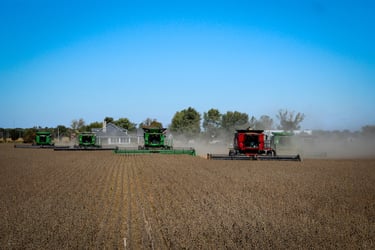


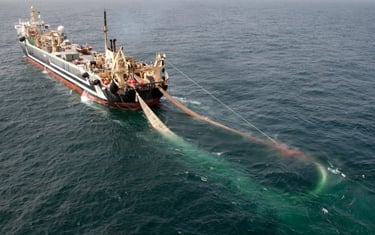
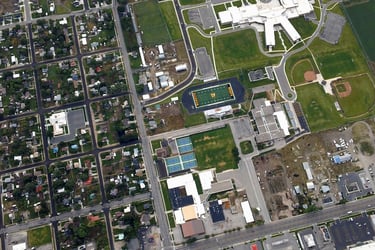

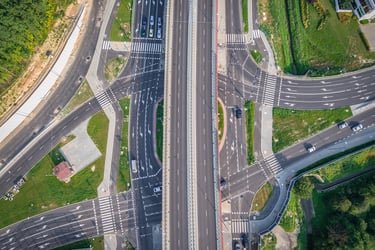


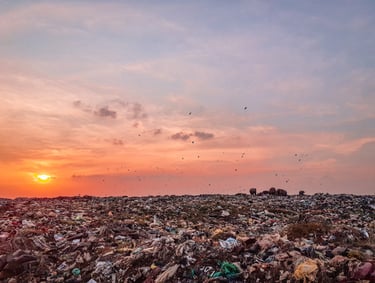
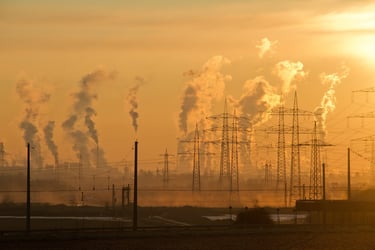

The Anthropocene as the epoch of human-induced change of biogeochemical cycles and climate
The exploitation of living beings, the modification of environments and the emission of various compounds are such that they modify the terrestrial biogeochemical cycles! The nitrogen and phosphorus cycles, for example, are upset by humans, in particular by agriculture, which induces a massive production of nitrogen and phosphorus compounds.
The water cycle is also largely influenced by humans, on the one hand by withdrawals, in particular for agriculture, on the other hand by the modification of the environment, for example by the construction of dams, the diversion or channeling of watercourses, or by deforestation which modifies the water cycle on a large scale [12].
The carbon cycle is also massively modified by deforestation, as well as (and above all) by the release of billions of tons of carbon held prisoner in the bowels of the Earth for millions of years. Since 1850 and the beginning of the industrial exploitation of fossil fuels, the concentration of CO2 in the atmosphere has increased by more than 45%. Methane and nitrous oxide, gases with a warming potential 30 and 300 times greater than that of CO2, have also seen their atmospheric concentration increase by 150% and 25%.
This reckless release of greenhouse gases has already led to a rise in the global temperature of more than 1°C compared to the pre-industrial level; the continuation of this process could lead to an additional increase in the global average temperature of 4°C by the end of the century [13]!
The modification of biogeochemical cycles as well as climate change are totally part of this global process that one can call "alteration of the substrate of living beings", and thus contribute to the collapse of life. It is important to note, however, that climate change, to which all the spotlight is directed, has at this stage had only a limited influence on the collapse of life. In other words, we did not wait for climate change to alter life, and it is quite possible to do one without the other.
"The Anthropocene is a proposed geological epoch dating from the commencement of significant human impact on Earth's geology and ecosystems, including, but not limited to, anthropogenic climate change [14]."
The observation made in the previous paragraphs leads me to propose a more personal definition, certainly less neutral but in my opinion more precise on what the Anthropocene is:
"The Anthropocene is a singular time in Earth's 4.5 billion years, during which a single animal species, Homo sapiens, exploits and alters the planetary surface in ways powerful enough to cause a mass extinction of life."
The Anthropocene is the world profoundly marked by human activity; it is therefore the reflection of what we are, and it does not seem to me that the portrait depicted is very flattering. Doesn't it enjoin us to a profound reorientation of our activity on this planet?
Henri Cuny
